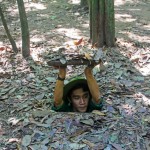Komodo Dragons – Indonesia (14.11.15)
The Komodo Dragon (Varanus komodoensis) species, native to just a few islands in Indonesia, rely almost exclusively on the world’s tourism industry for their protection. Without the growth in international interest, these magnificent creatures would frankly remain, as with so many of the world’s threatened species, on borrowed time.

The theory is that as long as there is appropriate and sustainable management in place, their future looks as good now as it has been over recent centuries. As one of Asia’s growing wildlife tourist attractions, the economic incentive tourists provide allows locals, the dragons and Komodo Island’s natural island heritage to flourish.
In today’s political climate that is a success story to be celebrated. Particularly in a week of tragic news for 224 families and a heavy blow to Egypt’s tourist industry.

Nearly ten thousand kilometres away, the Komodo Dragon’s natural environment is under very different pressures. We continue to delight in offering Nomadic Thoughts trips to visit these extraordinary ‘king of the lizard’ predators. With such legendary status the Komodo dragons, measuring up to 3m in length and weighing nearly 80kg, continue to fascinate, partly because of their infamous man-eating habit. Although the vast majority of lizards are vegetarian, the Komodo Dragon only marches on meat, consuming up to 80% of its own body weight at a time.
So ferocious is their reputation, and so huge their appetite, that visitors across the ages have kept their distance from the lizard’s sixty plus sharp teeth. They can run as fast as humans, and cut a person down like scissors through paper. They are unique to this outer island area, only otherwise found on the nearby islands of Rinca and Flores, protected as they have been over the centuries by the rugged hillsides, dry savannah, thorny vegetation and strong surf that crashes across the nearby reefs.

With only 6,000 Komodo Dragons left in existence, and only 350 breeding females you should definitely factor in a visit to see them. There is year-round access to this UNECSO World Heritage Site, and accompanied by a local ranger the viewing opportunities, as well as safety concerns, are superb. The Dragons strut around the island as if without a care in the world, in keeping with the matter-of-fact attitude of all wildlife in the Galapagos Islands.








